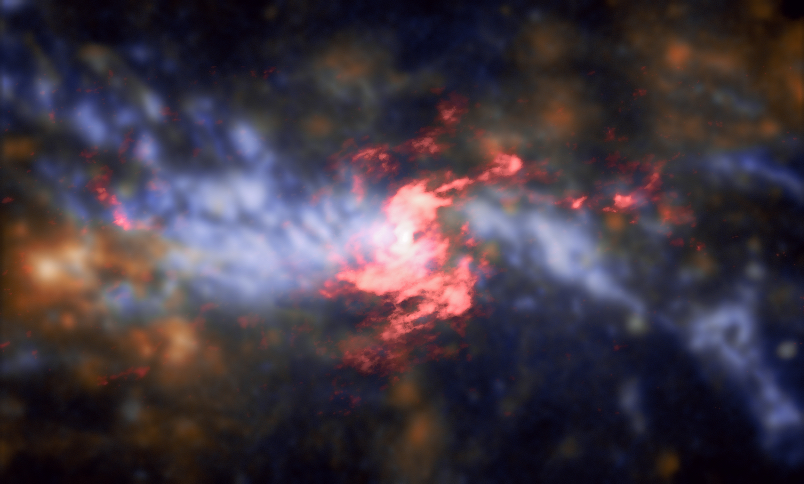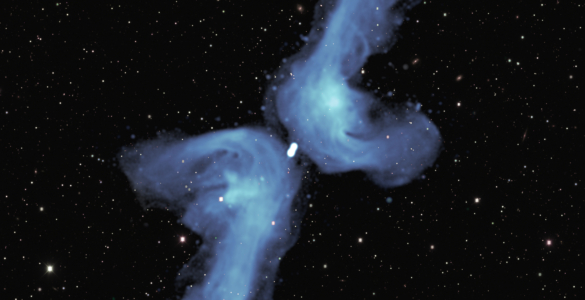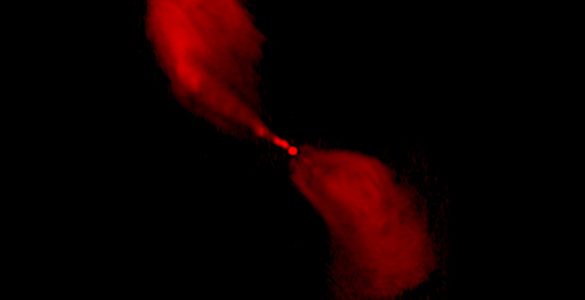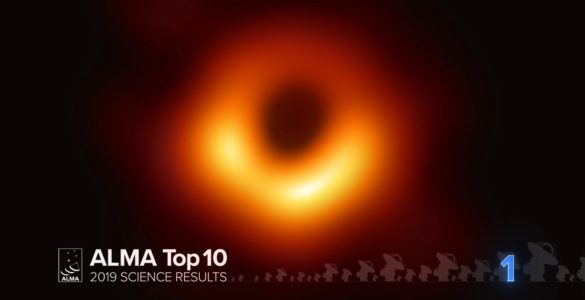Glowing Core of Brilliant Galaxy NGC 5643

This composite image shows the center of a galaxy named NGC 5643. This galaxy is located 55 million light-years from Earth in the constellation of Lupus (The Wolf). It is one of a class of objects known as a Seyfert galaxy. Seyfert galaxies have very luminous centers — thought to be powered by material being accreted onto a supermassive black hole lurking within — that can also be shrouded and obscured by clouds of dust and intergalactic material.
As a result, it can be difficult to observe the active center of a Seyfert galaxy. NGC 5643 poses a further challenge; it is viewed at a high inclination, making it even trickier to view its inner workings. However, scientists have used the Atacama Large Millimeter/submillimeter Array (ALMA) together with archival data from the Multi Unit Spectroscopic Explorer (MUSE) instrument on ESO’s Very Large Telescope to reveal this view of NGC 5643 — complete with energetic outflowing ionized gas pouring out into space.
These impressive outflows stretch out on either side of the galaxy and are caused by matter being ejected from the accretion disk of the supermassive black hole at NGC 5643’s core. Combined, the ALMA and VLT data show the galaxy’s central region to have two distinct components: a spiraling, rotating disk (ALMA data shown in red) consisting of cold molecular gas traced by carbon monoxide, and the outflowing gas, traced by ionized oxygen and hydrogen (VLT data shown in blue-orange hues) perpendicular to the inner nuclear disk.
| Technical Details | |
|---|---|
| Telescope | ALMA; VLT |














